In the search for optimal growing conditions for tomatoes, an age-old question resurfaces: do these vibrant red fruits truly require the confines of a bed? This article explores the potential benefits and drawbacks of using raised beds for tomato cultivation. By examining factors such as moisture retention, root development, and disease prevention, it aims to shed light on whether the traditional practice of growing tomatoes in elevated beds is a necessity or merely a popular tradition. With a closer look at the science behind this gardening technique, uncover the truth about the relationship between tomatoes and beds.
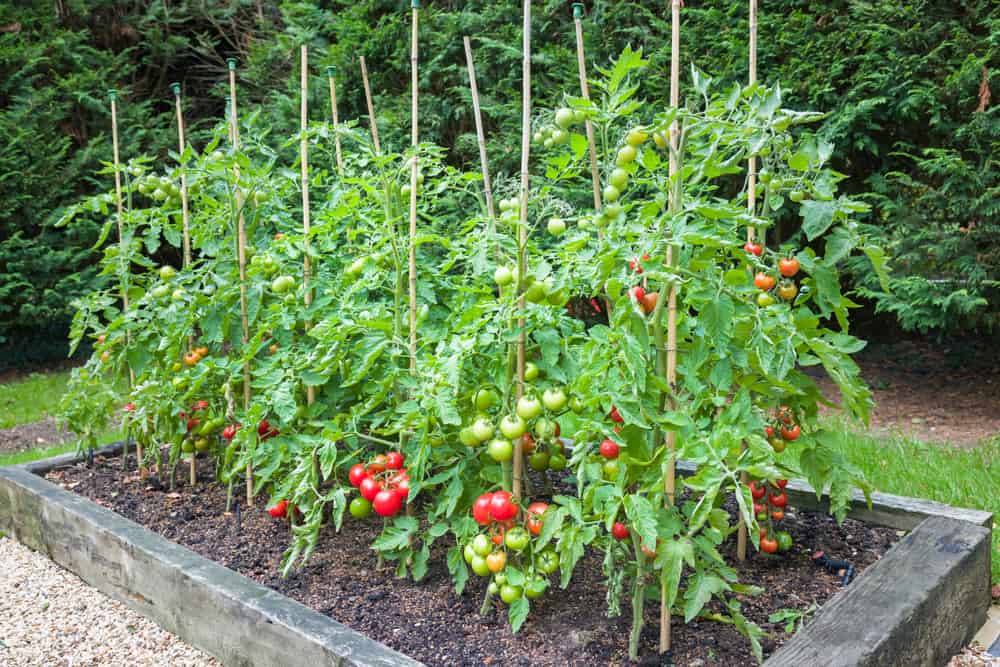
Advantages of Using Beds for Growing Tomatoes
Increased Air Circulation
One of the key advantages of using beds for growing tomatoes is the increased air circulation around the plants. When tomatoes are grown in beds, the spacing between the plants allows for better airflow, reducing the risk of diseases such as fungal infections. Unlike when tomatoes are grown in containers or close together in the ground, the bed layout ensures that each plant has enough space for air to circulate, creating a healthier growing environment.
Better Drainage
Another advantage of using beds for growing tomatoes is improved drainage. Beds offer better drainage compared to traditional ground planting, especially if the soil in your garden has poor drainage properties. Well-drained soil is crucial for tomato plants, as waterlogged soil can lead to root rot and other diseases. With beds, excess water can easily drain away, preventing the risk of waterlogging and providing a healthier environment for tomato roots.
Weed Control
Weed control is a constant battle for any gardener, and using beds for growing tomatoes can help in this regard. By creating raised beds or container beds, you can minimize the chances of weeds infiltrating your tomato plants. The elevated nature of these beds reduces the likelihood of weed seeds finding their way into the soil and outcompeting your tomatoes for nutrients and water. Additionally, the defined space of the beds makes it easier to spot and remove any weeds that manage to grow.
Heat Retention
Tomato plants thrive in warm temperatures, and beds can help retain heat, especially during cooler nights or early spring planting. The soil in beds absorbs and retains heat better than the surrounding ground, providing a warmer microclimate for the tomatoes. This can be especially beneficial in colder regions where temperatures may drop significantly at night. The retained heat in the beds promotes healthy growth and helps the tomatoes reach their full potential.
Easier Plant Care
Lastly, using beds for growing tomatoes makes plant care considerably easier. The raised or container beds bring the plants closer to eye level, reducing the need to stoop or bend down when tending to the plants. This ergonomic advantage can be particularly beneficial for individuals with mobility issues or back problems. Additionally, bed gardening allows for better access to each plant, simplifying tasks such as pruning, pest inspection, and harvesting.
Different Types of Beds for Growing Tomatoes
Raised Beds
Raised beds are a popular choice for growing tomatoes due to their excellent drainage, control over soil quality, and ease of access. These beds are built above ground level, usually in a rectangular or square shape, with sides made of wood, stone, or concrete blocks. The height of the bed can vary according to preference, but a depth of at least 12 inches is recommended for optimal root development. Raised beds offer the advantage of better soil warming, mitigating the risk of soil-borne diseases, and providing a defined space for each tomato plant.
Container Beds
Container beds are a versatile option for growing tomatoes, especially in small spaces or areas without suitable soil. A variety of containers can be used, such as pots, grow bags, or even repurposed items like barrels or buckets. The key consideration when choosing containers is to ensure they have adequate drainage holes. Container beds offer the advantage of portability, allowing you to move the plants to take advantage of sunlight or protect them from unfavorable weather conditions. Additionally, they provide greater control over soil quality and are suitable for those without access to garden space.
Hanging Beds
Hanging beds are a unique and space-saving option for growing tomatoes. As the name suggests, these beds suspend the tomato plants in baskets or containers, allowing them to grow vertically downwards. Hanging beds can be hung from hooks, railings, or overhead structures. They are a great option for those with limited ground space or for adding visual interest to a garden or patio area. However, it is essential to ensure that the hanging bed is securely anchored and that the baskets provide adequate support for the weight of the tomatoes as they grow.
Straw Bale Beds
Straw bale beds offer an alternative and sustainable method for growing tomatoes. Bales of straw are arranged in a rectangular shape and soaked with water to initiate decomposition. Once the straw starts to break down, it provides a nutrient-rich growing medium for the tomato plants. Straw bale beds offer excellent drainage and heat retention properties, making them suitable for cooler climates. Additionally, the decomposition process generates heat, further promoting plant growth. However, it is important to note that straw bales need careful watering and monitoring to prevent them from becoming waterlogged or drying out too quickly.
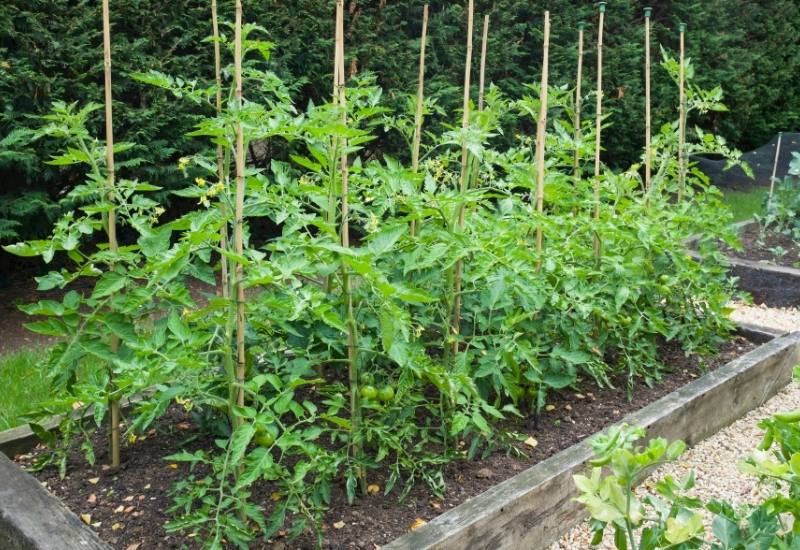
Preparing the Bed for Tomato Planting
Location and Site Selection
When preparing a bed for planting tomatoes, selecting the right location is crucial. Tomatoes require full sunlight, so choose a spot that receives at least six to eight hours of direct sunlight daily. Additionally, consider the proximity to a water source for easier irrigation. Avoid areas prone to strong winds that can damage the plants or cause them to topple over. It is also advisable to rotate the planting location each year to minimize the risk of soil-borne diseases.
Soil Preparation
Proper soil preparation is essential to provide the best growing conditions for tomatoes. Start by removing any weeds or existing vegetation from the bed, ensuring a clean surface for planting. Loosen the soil using a garden fork or tiller, breaking up any clumps and aerating the soil. This will facilitate root penetration and improve soil structure. Remove any rocks, roots, or debris that may hinder plant growth. Once the soil is prepared, it is time to consider adding organic matter.
Adding Organic Matter
Adding organic matter to the soil significantly improves its fertility and overall health. Organic matter, such as compost or well-rotted manure, enhances soil structure, moisture retention, and nutrient availability. Spread a layer of organic matter over the bed surface, around two to four inches thick, and mix it into the top several inches of soil using a garden fork or tiller. This will help improve nutrient levels, water-holding capacity, and promote beneficial microbial activity.
pH Level Adjustment
Tomatoes prefer slightly acidic soil, with a pH range of 6.0 to 6.8. Therefore, it is important to test the soil pH and make any necessary adjustments before planting. Soil pH test kits are readily available at garden centers or can be sent to a laboratory for analysis. If the pH is too low (acidic), add agricultural lime to raise it. Conversely, if the pH is too high (alkaline), sulfur or elemental sulfur can be added to lower it. Follow the recommended rates based on the test results to ensure optimal pH levels for tomato plants.
Amending Soil with Nutrients
Tomatoes are heavy feeders and require an adequate supply of nutrients for optimal growth and fruit production. Before planting, consider amending the soil with balanced organic fertilizers or specific tomato fertilizers. These will supply essential nutrients such as nitrogen, phosphorus, potassium, and trace elements. Follow the recommended application rates for the specific fertilizer being used, taking care not to over-fertilize, as this can lead to excessive foliage growth at the expense of fruit development.
Direct Planting vs. Transplanting in Beds
Advantages of Direct Planting
Direct planting involves sowing tomato seeds directly into the bed where they will grow. This method offers several advantages, including cost-effectiveness, as it eliminates the need for purchasing or raising seedlings. Direct planting also allows for a longer growing season, as seeds can be sown earlier, with some varieties able to withstand mild frosts. Additionally, direct planting can be more suitable for certain tomato varieties that have a shorter maturity period and do not require the head start that transplanting provides.
Advantages of Transplanting
Transplanting refers to the process of starting tomato seedlings indoors or in a greenhouse and later moving them to the prepared bed. Transplanting offers several advantages over direct planting. It allows for better control over the growing conditions, as seedlings can be started in a controlled environment and monitored closely. Transplanting also provides a head start for the plants, allowing them to establish stronger root systems before being exposed to outdoor conditions. This can result in earlier and more productive harvests.
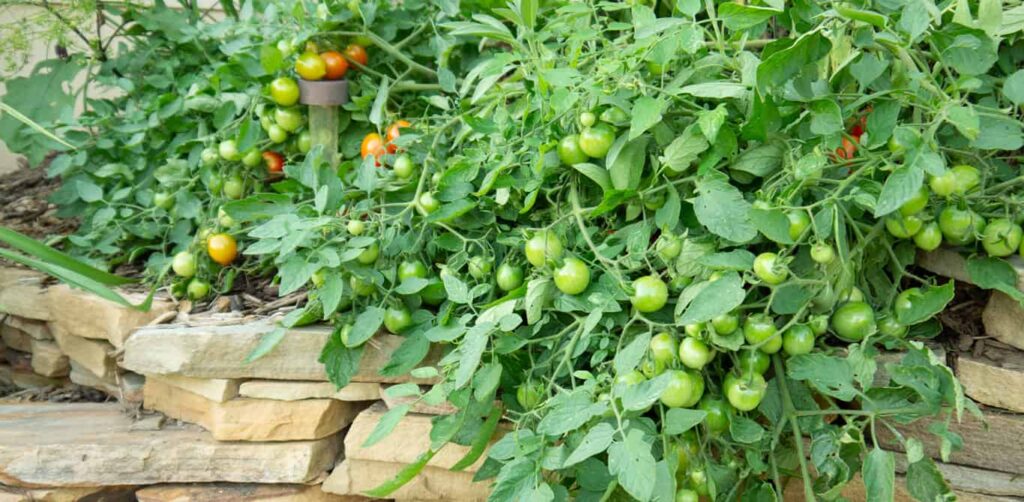
Best Bed Spacing for Tomatoes
Determining Optimal Plant Density
Determining the optimal plant density or bed spacing for tomatoes depends on various factors such as the tomato variety, growth habit, and growing conditions. In general, providing adequate space between plants is important to promote good air circulation, reduce the risk of diseases, and allow each plant to access sufficient sunlight and nutrients. Overcrowding can result in stunted growth, poor fruit development, and increased vulnerability to pests and diseases.
Spacing Guidelines for Different Tomato Varieties
Spacing guidelines for tomato varieties can vary, but a general rule of thumb is to provide a minimum spacing of 18 to 24 inches between plants. This allows for optimal air circulation and room for the plants to spread their foliage. Indeterminate varieties, which continue to grow and produce fruit throughout the season, generally require greater spacing and support structures. Determinate varieties, on the other hand, tend to be more compact and can be spaced closer together, usually around 12 to 18 inches apart.
Bed Management for Tomato Plants
Staking and Supporting Tomatoes
Staking and supporting tomato plants is crucial to prevent them from sprawling on the ground, which can lead to increased disease susceptibility and fruit rot. Staking involves driving a stake into the ground beside each tomato plant and tying the main stem to the stake as it grows. This provides support and keeps the plants upright, allowing for better air circulation and sunlight exposure. Various materials can be used for staking, such as bamboo stakes, wooden stakes, or metal cages.
Pruning and Training Techniques
Pruning and training techniques help maintain the desired structure and shape of tomato plants, enhance air circulation, and promote better fruit development. Indeterminate varieties benefit from pruning, which involves removing suckers or side shoots that emerge from the leaf axils. This directs more energy towards fruit production and prevents the plants from becoming excessively bushy. Determinate varieties generally require less pruning, as their growth is naturally more compact.
Mulching
Mulching can greatly benefit tomato plants and help maintain optimal soil moisture levels, temperature, and weed suppression. Applying a layer of organic mulch, such as straw, hay, or compost, around the base of the plants helps conserve moisture by reducing evaporation from the soil. Mulch also acts as a barrier, preventing weed growth and competition for nutrients. Additionally, mulching helps regulate soil temperature, keeping it cooler during hot summers and warmer during cooler nights.
Watering and Irrigation
Consistent moisture is important for tomato plants, as fluctuations in soil moisture can lead to problems such as blossom end rot and cracking. When watering tomatoes, it is important to provide deep, thorough watering to encourage strong root growth. Avoid frequent shallow watering, as this can promote shallow root development and increase the risk of stress during hot, dry periods. Consider drip irrigation systems or soaker hoses to deliver water directly to the root zone, minimizing foliage wetting and reducing the risk of foliar diseases.
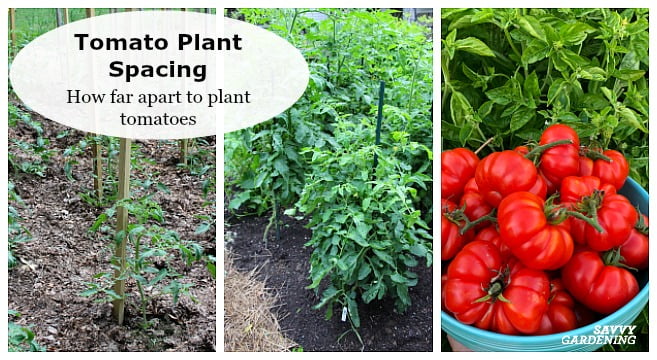
Pest and Disease Control in Bed Planting
Common Tomato Pests and Diseases
Tomato plants are susceptible to a range of pests and diseases that can significantly impact plant health and productivity. Common pests include aphids, whiteflies, hornworms, and tomato fruitworms, while diseases such as early blight, late blight, and powdery mildew can also affect tomatoes. Regular inspection and early detection are vital for effective pest and disease control.
Preventive Measures
Implementing preventive measures can help minimize the risk of pest and disease infestations. Select disease-resistant tomato varieties whenever possible, as they have natural genetic traits that provide some level of protection against specific diseases. Proper sanitation practices, such as removing and destroying infected plant debris, can help prevent the overwintering of pests and diseases. Crop rotation, where tomatoes are not planted in the same spot for consecutive years, can also help break pest and disease cycles.
Natural Remedies and Organic Controls
For those who prefer organic methods of pest and disease control, there are several options available. Beneficial insects, such as ladybugs and lacewings, can be introduced to help control aphids and other pests. Neem oil, a natural pesticide derived from the neem tree, can be used to manage a range of insect pests. Bt (Bacillus thuringiensis), a bacterial insecticide, can be effective against caterpillar pests. Additionally, homemade sprays using ingredients like garlic, chili peppers, or soap can offer some control for certain pests.
Chemical Controls
In situations where pest or disease pressures are severe or cannot be effectively managed with organic methods, chemical controls may be necessary. Chemical pesticides should be used as a last resort and applied strictly according to label instructions. It is important to be mindful of potential impacts on beneficial insects and the environment. Consult with local extension services or agricultural professionals to determine the most appropriate chemical controls for specific pest and disease problems.
Crop Rotation and Bed Preparation for Next Season
Benefits of Crop Rotation
Crop rotation is a valuable practice in bed gardening to maintain soil health and reduce the risk of pest and disease buildup. By rotating crops, especially tomatoes, you can prevent the buildup of pathogens that specifically affect those plants. Rotating tomatoes with other unrelated crops, such as legumes, leafy greens, or root vegetables, helps break cycles of pest and disease infestations. Additionally, different crops have varying nutrient requirements, and rotation allows the soil to replenish the necessary nutrients for the next crop.
Preparation Techniques for Next Season
After harvesting tomatoes, proper bed preparation techniques can set the stage for a successful growing season the following year. Start by removing any remaining plant debris and discarding it away from the garden to prevent disease carryover. Till or turn over the soil to break up clumps and expose any overwintering pests or diseases to freezing temperatures. Consider adding fresh organic matter, such as compost or well-rotted manure, to replenish soil nutrients. Lastly, cover the bed with a layer of mulch to protect the soil and prevent weed growth until it is ready for next season’s crop.
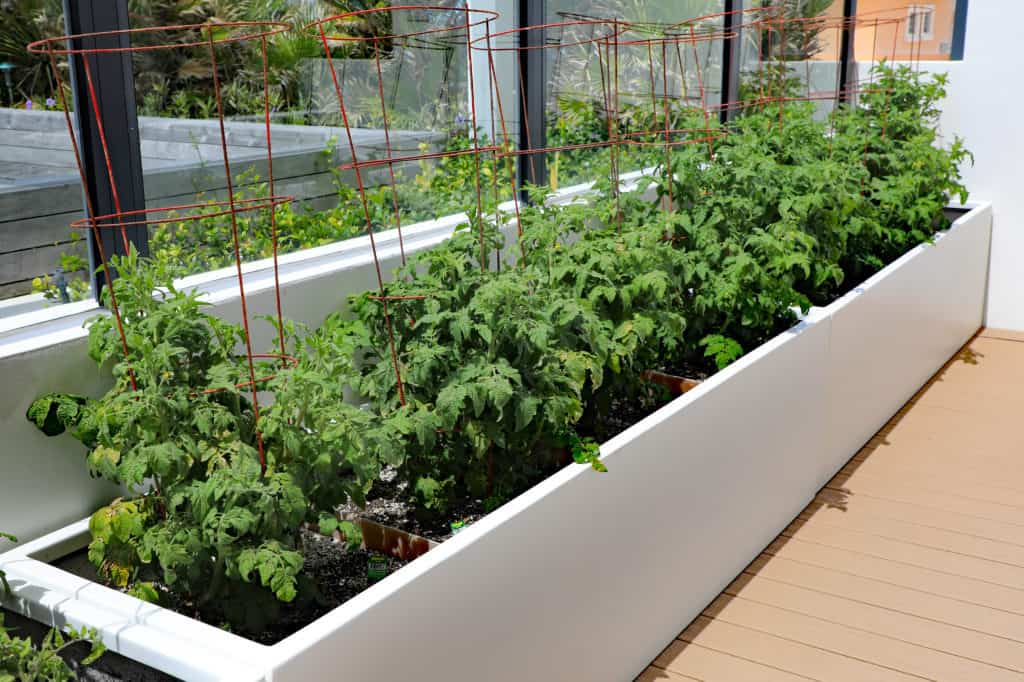
Alternative Methods for Growing Tomatoes Without Beds
Container Gardening
Container gardening provides a viable alternative to beds for growing tomatoes, especially for those with limited space or unsuitable soil conditions. Growing tomatoes in containers allows for greater control over growing conditions, including soil quality and drainage. Choose containers that are large enough to accommodate the root system of the tomato plants and ensure they have adequate drainage holes. Container-grown tomatoes require regular watering and fertilization to provide the necessary moisture and nutrients.
Hydroponics
Hydroponics is a soilless method of growing plants that can be used to cultivate tomatoes. This technique involves growing plants in a nutrient-rich water solution instead of traditional soil. Hydroponics offers several advantages for growing tomatoes, including faster growth rates, increased yield, and efficient use of resources such as water and space. Specialized hydroponic systems and nutrient solutions are available, and the plants are typically grown in containers, trays, or troughs.
Vertical Gardening
Vertical gardening is a space-saving technique that involves training tomato plants to grow vertically, using trellises, cages, or other support structures. Vertical gardening maximizes the use of vertical space and allows for higher plant densities, making it suitable for those with limited ground space. By directing the plants’ growth upwards, vertical gardening also improves air circulation and sunlight exposure, leading to healthier plants and increased fruit production. It is important to provide adequate support for the plants as they grow to prevent branches from breaking under the weight of the fruits.
Conclusion
Using beds for growing tomatoes offers numerous advantages, such as increased air circulation, better drainage, weed control, heat retention, and easier plant care. Different types of beds, including raised beds, container beds, hanging beds, and straw bale beds, provide options for various gardening situations. Proper bed preparation, whether through direct planting or transplanting, ensures the ideal start for tomato plants. Understanding the best bed spacing, bed management techniques, and pest and disease control measures are key to achieving successful tomato cultivation. Additionally, alternative methods such as container gardening, hydroponics, and vertical gardening offer viable options for those without access to traditional beds. By following good practices and utilizing the appropriate growing techniques, you can enjoy a bountiful harvest of delicious homegrown tomatoes.



